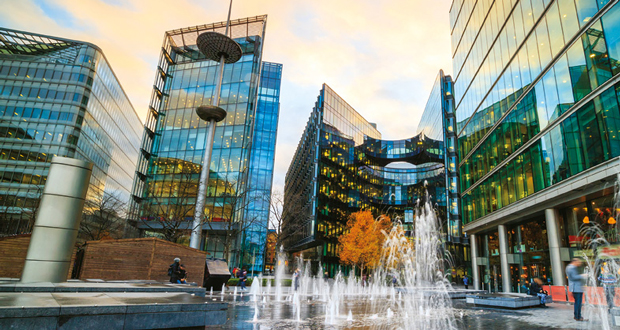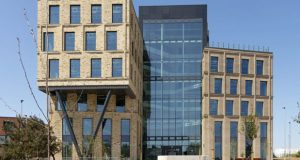 Neil Coles, Senior Strategic Relationship Director at Chubb Fire and Security, explains how smart fire and security systems can help keep buildings safe and secure
Neil Coles, Senior Strategic Relationship Director at Chubb Fire and Security, explains how smart fire and security systems can help keep buildings safe and secure
In the past, HVAC, lighting, and security systems have been separate entities. Technological advancements have enabled us to knit these elements together. As a result, the modern-day building is smart. In fact, the smart buildings market is on a healthy trajectory and is projected to grow from its current value of £68.5 billion to £279 billion in 2029, according to Fortune Business Insights.
But smart buildings and intelligent technology are all about data. Monitoring, capturing, sending, and receiving information through the Internet of Things (IoT) devices, sensors, software, and online connectivity. This valuable information allows building managers to understand various building characteristics, generate insight, analyse usage patterns, and make informed decisions to optimise a building’s environment and performance.
Before anything else, providing employees with a safe building to work in is essential. That starts with installing the correct fire and security systems for that building’s particular needs.
With these fire and security solutions as a foundation, FMs can build on this solid base to connect other devices and link in Building Management Systems (BMS) to bring all of this together and create a highly efficient and smart building.
This gives FMs and building managers ‘control’ of the many facets of their buildings’ security systems, such as CCTV and Access Control. Using AI and analytical technologies, building managers know occupancy rates, which can trigger many responses, such as switching on and off lighting, air-conditioning, and heating.
As well as receiving information, building managers can ‘push’ alerts to occupants. If a building manager wants people to know they should no longer be using a particular floor or warn them of scheduled maintenance, they can alert everyone concerned.
GETTING BACK TO THE OFFICE
Following the pandemic, many businesses stuck with a hybrid working system. While there might be debates around whether employees are more productive in the office or at home, one thing is for sure – an employee who feels happy and comfortable will be more motivated and effective than those who don’t.
Many businesses are now attempting to bring employees back to the office and are utilising smart technology to make their spaces more comfortable. Employees can create a bespoke working environment in their office with the touch of a button. Connected systems such as heating, air-conditioning, and lighting can all be adjusted using an app. Colleagues can even customise their work area to adjust the height of their desks or lighting around the computer.
By integrating with HR systems, the smart building will know which employees are scheduled to work in the office. Push notifications can inform employees about changes such as moving desks, routine maintenance work, or if they have been allocated a parking space.
Once the employee arrives, the CCTV systems will identify the employee and, combined with their employee credentials on their smartphone, will be granted access through the access control systems.
On a wider building level, occupancy data can provide business owners with actionable information to use only heating and lighting when needed. Managers can group employees on one floor rather than spread across three or four, reducing the need to heat and light all of this space. In addition, systems can provide other savings in services such as cleaning. There is no need to vacuum clean an area that hasn’t been occupied.
EFFICIENT MAINTENANCE
Smart technology also allows fire and security engineers to monitor individual devices constantly. If part of the system starts to fail, then remote intervention and maintenance can be carried out to isolate or rectify the issue. This enables the systems to maintain consistent coverage without needing an engineer to attend, which incurs no additional cost to the client and minimises the engineers’ carbon footprint.
Many systems are also ‘future proofed’, so their features are already in place and will be compliant if and when industry standards change.
ENVIRONMENTAL AND SOCIAL IMPACT
The climate emergency has placed a greater emphasis on a business’ environmental impact. As smart buildings work more efficiently, using less electricity and other utilities contributes towards these goals. The data provided to building owners and FM is detailed and tangible and helps organisations combat any claims of greenwashing.
Another added benefit of a highly efficient building is the cost of running it. This is particularly important in the current climate of rising energy costs and will have organisations save money.
Ultimately, the convergence of these once disparate systems means FMs can optimise working environments to help employees boost productivity and enhance their wellbeing. The data provides a quick and effective way to analyse how the building performs to achieve greater energy efficiency and reduce the environmental impact. And most importantly, from our point of view as fire and security specialists, smart technology improves safety.





